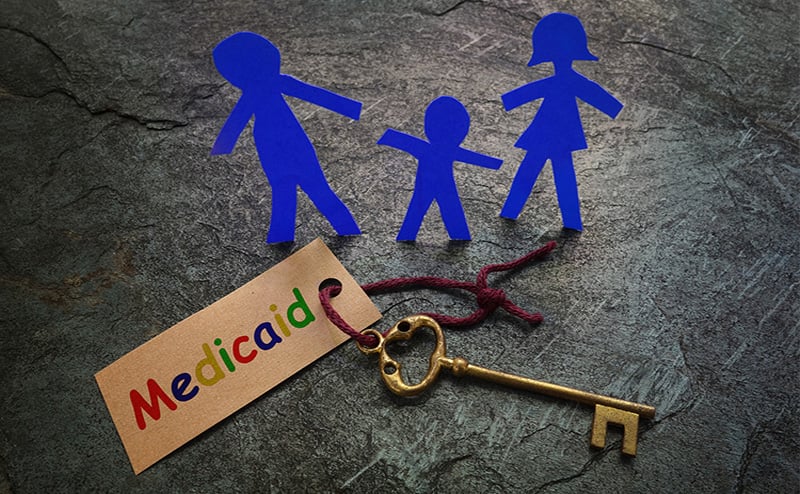Medicaid and the Children’s Health Insurance Program (CHIP) cover over 100 million children, pregnant women, parents, seniors, and individuals with disabilities across the country—so it’s not a surprise that Medicaid beneficiaries account for the plurality of emergency department (EDs) visits each year. Since you as emergency physicians undoubtedly care for these patients on a daily basis, it’s important to understand any underlying trends or characteristics of this diverse patient population.
Interestingly, the Centers for Medicare & Medicaid Services (CMS) just released comprehensive data highlighting how the COVID-19 public health emergency (PHE) has impacted utilization of health care services, including telehealth and mental health services, for Medicaid and CHIP beneficiaries (click here for press release and here for full report). Due to a significant data lag that prevents CMS from analyzing recent Medicaid claims, the report only shows utilization from March 2020 to October 2020.
While there are numerous findings in the report, I want to highlight a few that are quite striking. First is the impact that the pandemic has had on children’s health care. Medicaid and CHIP cover nearly 43 million children (including 75 percent of children living in poverty). Despite the fact that COVID-19 did not cause as much severe illness among children, many children on Medicaid still appear to have forgone critical health care services. According to the data, when comparing utilization from March through October 2020 to the respective months in 2019, there were 1.8 million, or 9 percent, fewer vaccinations for children up to age two, 4.6 million, or 21 percent, fewer child screening services, 14 million, or 34 percent fewer mental health services, and 11.4 million, or 39 percent, fewer dental services. CMS believes that these trends are improving now, but as you know, when children miss some of these services, it may be hard or even impossible to make up for that.
As you can see above, there was a significant (over one-third) drop in mental health services among children. Unfortunately, a similar trend was found among the Medicaid adult population. Although there is evidence from the Centers for Disease Control and Prevention (CDC) suggesting that the number of individuals with mental health and substance use disorder (SUD) conditions increased during the COVID-19 pandemic, adults (ages 19 to 64) on Medicaid received 12 million, or 22 percent, fewer mental health services during the March through October 2020 timeframe. SUD services for this adult population declined starting in March 2020, increased in June, and were still below 2019 levels through October 2020. Overall during this period, there was a 3.6 million, or 13 percent, drop in SUD services.
The last major highlight of the report relates to the use of telehealth services. Nearly 68 million more services were delivered via telehealth from March to October 2020 (compared to the respective months in 2019). That represents an increase of 2,745 percent. Yes, that’s right—2,745 percent! Telehealth utilization spiked in April 2020 and fell from May through October among all age groups (although adults seem to have used more telehealth services than children.) One caveat to CMS’ findings is that telehealth utilization rates for adults over 65 are likely inaccurate. Thirteen percent of the Medicaid population is dually eligible for both Medicare and Medicaid (“dual eligibles”—and when health care services are performed for these individuals, they are primarily reimbursed by Medicare. Therefore, to get the complete picture of telehealth utilization for this patient population, one would have to examine Medicare data. The Office of the Assistant Secretary of Planning and Evaluation (ASPE) within the U.S. Department of Health and Human Services (HHS) released a report last July showing that there was a tremendous increase in telehealth services among Medicare beneficiaries—including dual eligibles—from March through May 2020. In fact, by April 2020, nearly half of all primary care visits for dual eligibles were conducted via telehealth.
While we should all appreciate CMS’ deep dive into the Medicaid data, it is unfortunate that we don’t have a better idea of how these Medicaid beneficiaries are faring now. It takes CMS seven months(!) to receive 90 percent of claims data from CMS’ Medicaid data collection system, the Transformed Medicaid Statistical Information System (T-MSIS). This delay truly makes it difficult to understand trends in real-time and address the current needs of this population. Thus, although CMS believes that these trends are improving and that Medicaid beneficiaries, including children, are catching up on forgone services, we will have to wait another seven months to find out for sure!
Until next week, this is Jeffrey saying, enjoy reading regs with your eggs.






